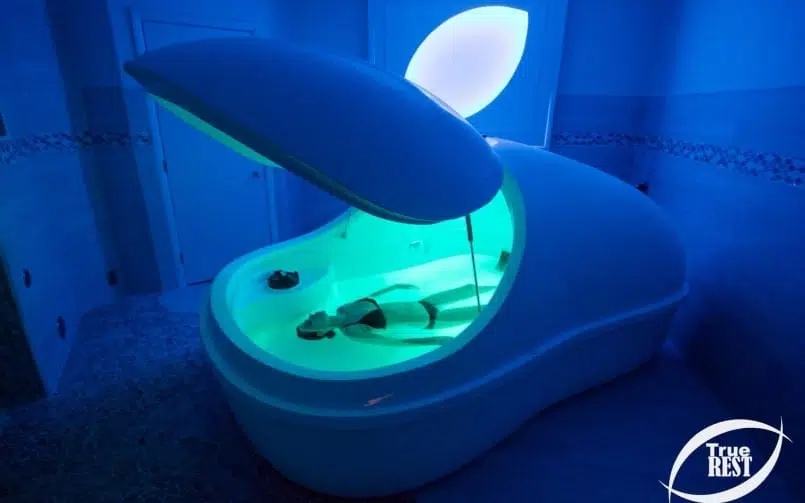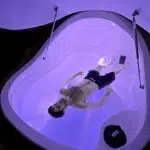If you subscribe to a streaming video service, you’re probably already familiar with Netflix’s latest binge-worthy hit, Stranger Things. At the center of the show’s plot are questions on the nature of reality, the fabric of space-time, and the depths of our own consciousness. So, of course, it was only a matter of time before they introduced the audience to sensory deprivation.
Here’s the gist: After a series of mysterious research studies involving psychedelic drugs, a young girl develops telekinetic and psychic abilities. To test the limits of her skills, scientists utilize a sensory deprivation tank, where the girl encounters a strange world and accidentally opens a portal to another realm. The only way to fix the damage? She and a band of misfit science nerds have to build their own float tank.
This picture of flotation therapy is common among those who have never experienced it, but how much is myth versus fact?
Early floaters entered total submersion tanks: FACT
The first float tank involved full-body submersion in an upright position and required a breathing mask, much like the tank we see in the Stranger Things lab. Not only were users uncomfortable in the tanks – fear of drowning was a common concern – but the use of heavy equipment and tight clothing prevented a true sensory deprivation experience. Continued improvements lead to the development of the first modern-day float tank in the 1970s.
Floating can lead to strange or scary places, like a portal to another world: MYTH
Sci-fi screenwriters may have you believe that flotation is a gateway to another dimension, but float therapy is just an opportunity to reconnect with oneself. Research has shown that the brain enters a meditative state while floating, allowing a deep sense of physical and mental calm. While some floating regulars have described seeing lights or shapes, most float-goers report simply losing track of time while their brains and bodies reset.
Dr. Martin Brenner is modeled after John C. Lilly: FACT…Turned Urban Legend
The Stranger Things writing crew took more than a few liberties with John C. Lilly’s research history when they created Dr. Martin Brenner, a mad scientist with an interest in LSD, mind control, and unethical research practices. The founding father of flotation, Lilly’s research focused on natural states of consciousness, with a goal of understanding how the brain functions without any interference – meaning no sensory input and no psychotropic drugs. Though Lilly famously experimented with LSD during his own floating sessions later on, he concluded that a drug-free float is best to relax and open the mind. While conspiracy theories have always swirled about government research with psychedelic drugs during that era, John C. Lilly looked more like your local float guru than Dr. Brenner and his squad of science goons.
You can build your own float tank with materials just laying around the house (or school gym): MYTH-ish
Do a quick online search and you’ll find thousands of ways to build your own float tank…but none of them recommend using a plastic swimming pool and the expertise of the middle school science club. Modern technology has made it easier than ever to build and maintain float tanks, but even the at-home variety look similar to what you’ll find at a float center.
What’s the strangest thing about flotation therapy? The laundry list of physical and mental benefits a single session provides. Don’t let horror movie myths stop you from floating your way to better health.


